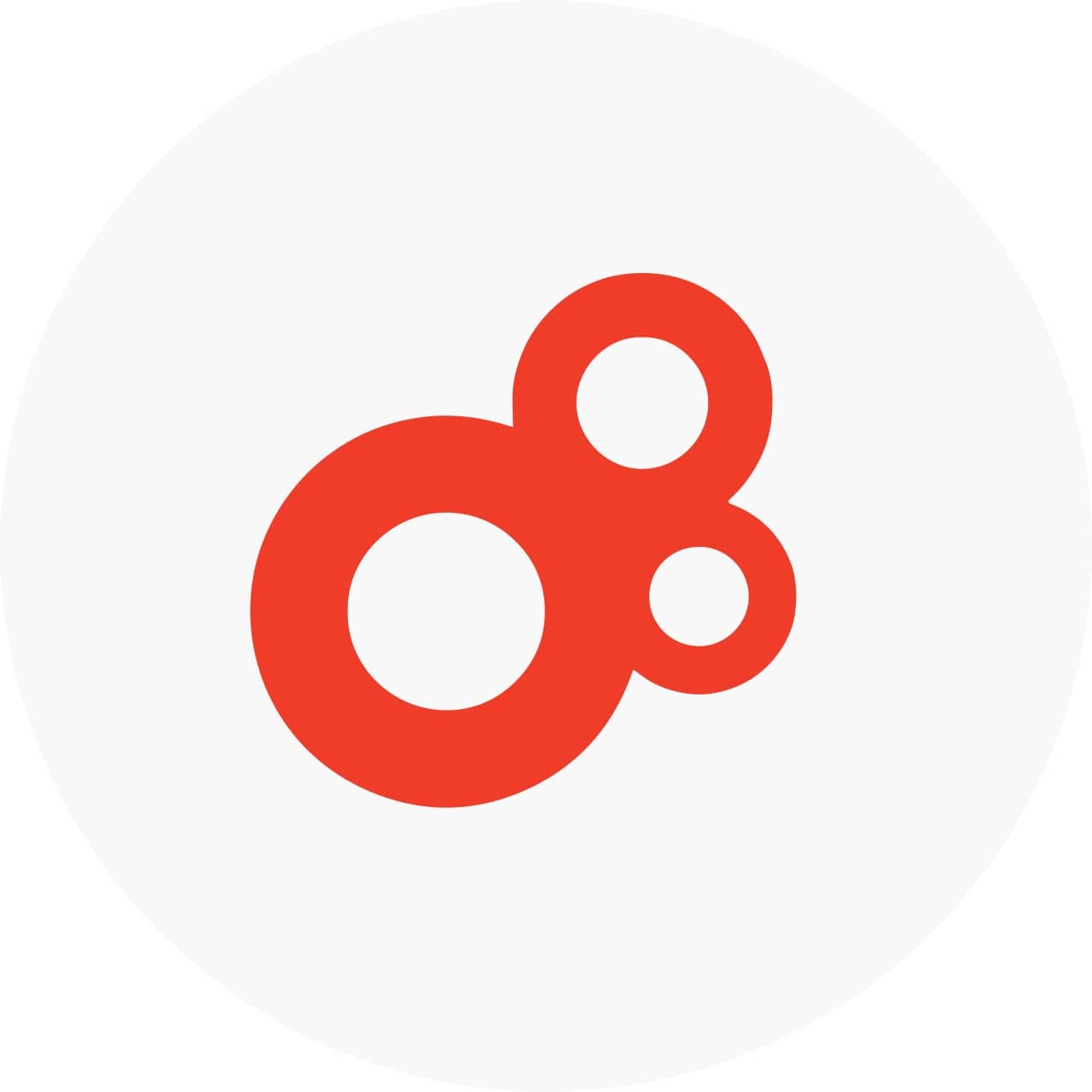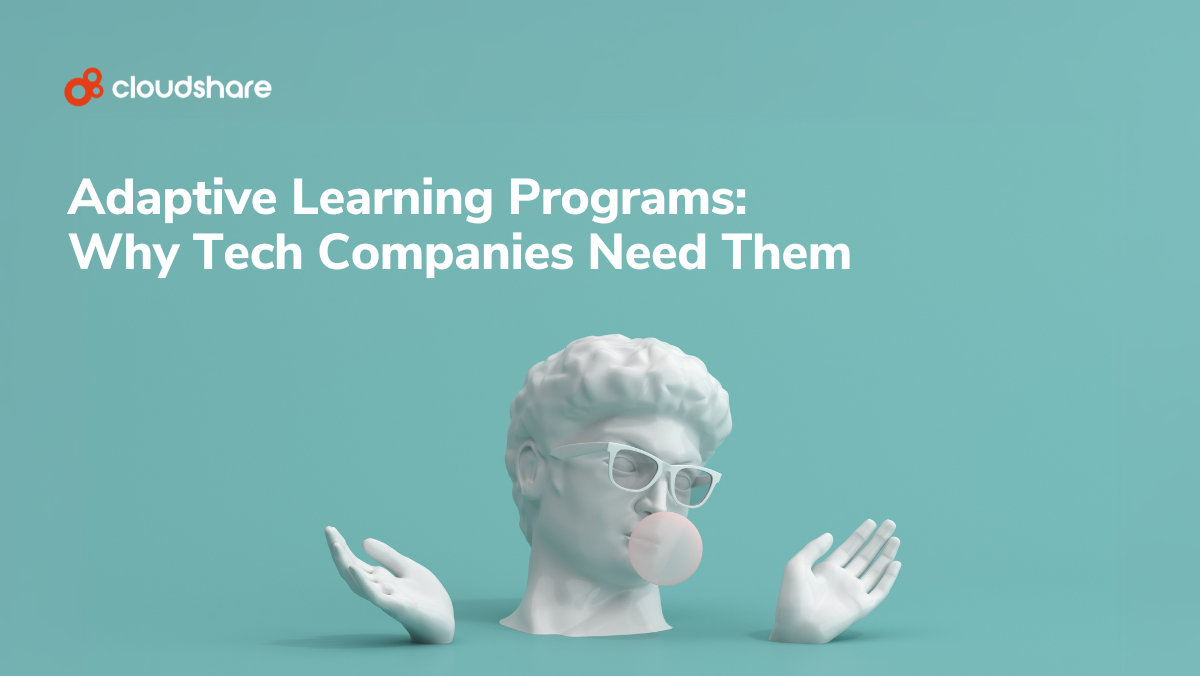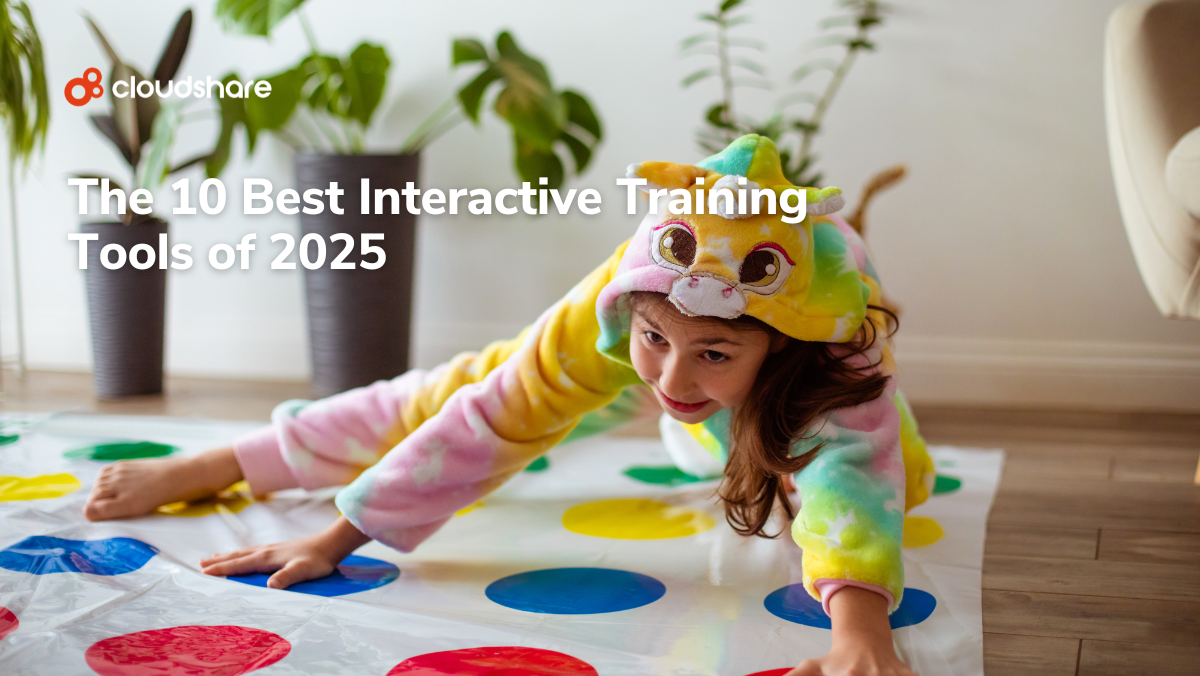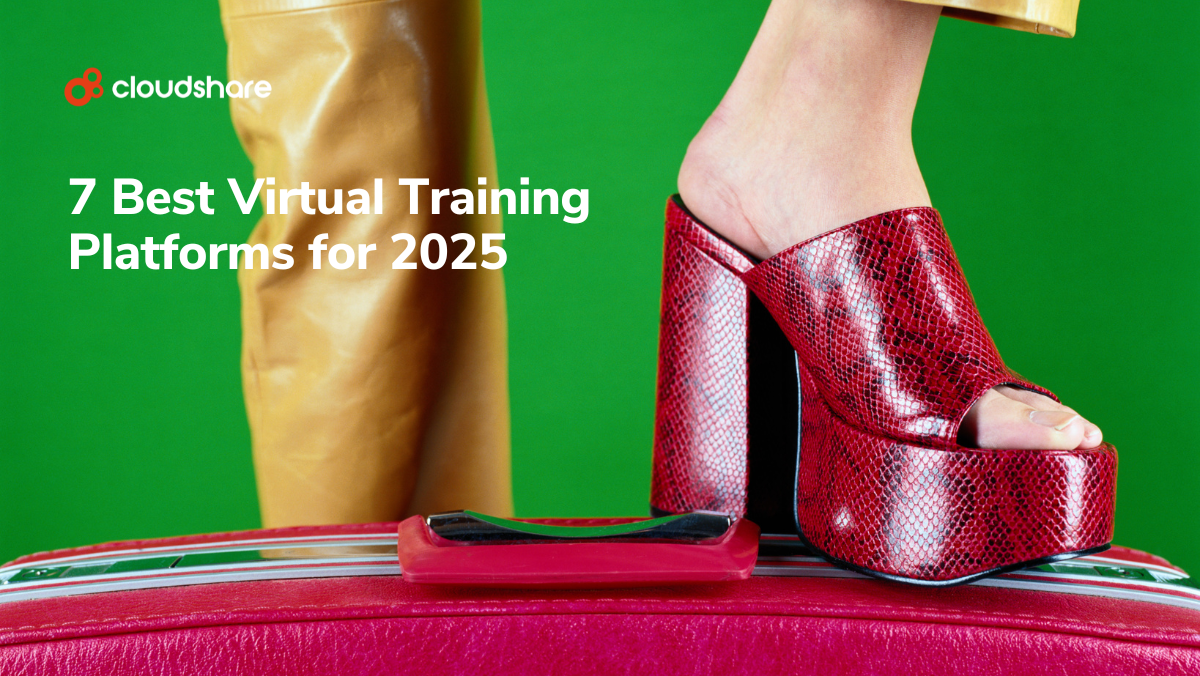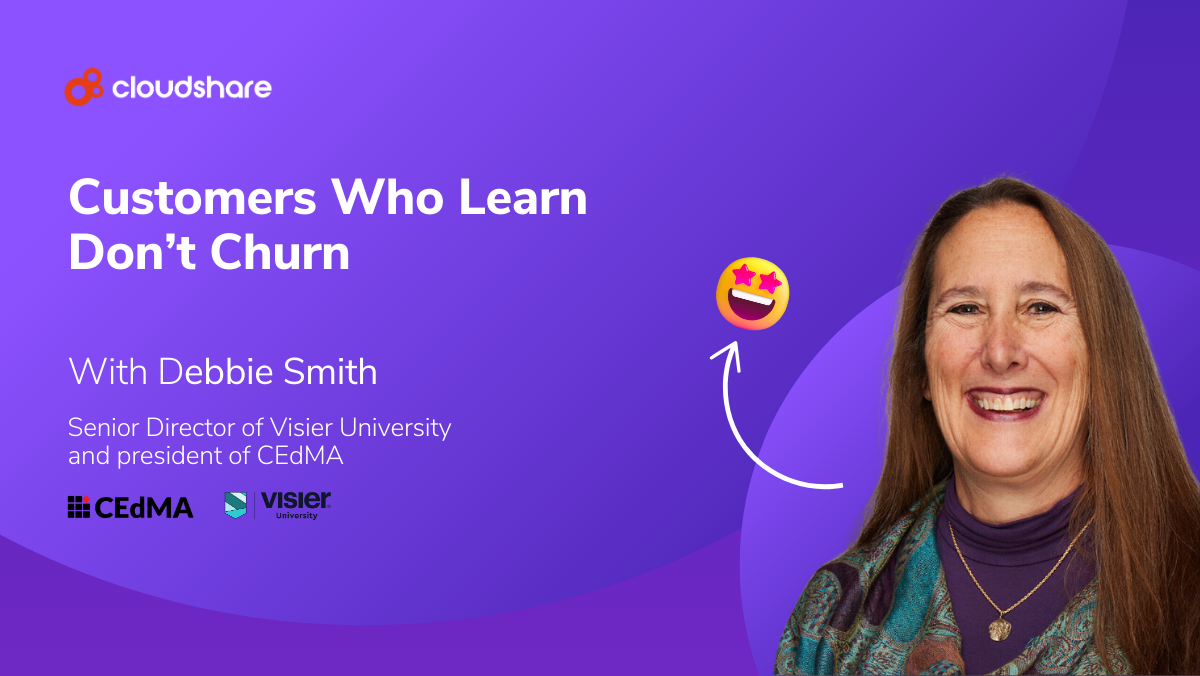
When you talk about customer education with Debbie Smith, you go away wiser—and inspired.
Debbie is the Senior Director of Visier University and president of the Customer Education Management Association (CEdMA). In her usual fearless style, she’s quick to share her point of view. I present to you now some of the highlights from a one-on-one we had about marketing customer education.
Debbie works for a SaaS company that specializes in analytics—people analytics—and she likes to back up her assertions with numbers.
For customer success now, churn is the big thing. Customers who learn don’t churn.
How does training affect churn? Well, I did a churn analysis at Visier and showed that people who had churned had not been involved with training in the last year.
I’ve shown this at other companies too. In my first customer education role, I set up a dashboard. I showed companies who took eLearning had an 11% increase in ARR. Those who took instructor-led had about a 25% increase. Those who went through a certification program had a 69% increase in ARR, and with those who got certified, we had zero churn. Those were some pretty impressive numbers, and I’m looking to duplicate that here.
So, one of the things we want to do is get CSMs to have customers take training because they are less likely to churn. It’s the biggest thing because it’s much more expensive to go find new customers than to keep the ones you have.
Though she’s quick to posit the importance of customer retention, Debbie is all in on capitalizing on how customer education can create leads.
Education-qualified leads are really important. I’m working with my marketing team to help fund a project for customer acquisition. The project focuses on a KPI that we’re both driving towards. Aligning KPIs helps you build solid relationships across functions, which is huge for getting anything done.
We all know software has become more intuitive. The customer’s problem usually isn’t where to click—it’s the job they’re trying to get done.
And so the project is about understanding the people analytics space as opposed to just understanding our software. Of course, we’re going to use Visier to show how you would do things with people analytics, but at its core, it’s about what people analytics is, why it matters, and how it impacts your company.
I asked if it was important to integrate the technology systems customer education and marketing rely on.
Debbie: Absolutely. Every place I’ve gone, my LMS has been tightly integrated with my CRM. My LMS sends all of the data into the CRM, which connects the user to a contact. The contact is then tied to a customer and/or an opportunity.
We can look at product usage and we can do all of the correlations. Product usage is a combination of how much time they used it, who’s using it, and how many users at each company are using it. It’s the penetration rate.
So, looking at what they do after they take a course is how you learn if your training is effective. What do they do with the product? When they’ve done the training, do they buy? Do they become an education-qualified lead? If they’ve already bought, do they use the product more after the training? Do they buy more seats or more features or modules?
Debbie cited a cool example (which I’ve abbreviated)…
Debbie: When I was at Braze, we showed that people who went through our training, an instructor-led hands-on program, created five times as many campaigns. And those campaigns had much better open rates. We were seeing our customers become more successful with their customers because they had gone through our training.
What marketing channels have you used to promote customer ed and which ones were most effective?
Debbie: We’ve used social media. We’ve used in-app. We’ve used email campaigns. Social works well with reaching outside for new customer acquisition. In-product and email work well for the customer base. CSMs also become a marketing channel.
Events too. Every company I’ve been with has done pre-conference days at conferences, or even virtual conferences.
Debbie and I had talked before about user communities, so I asked for her take on their value.
Debbie: We are in the process of getting ready to integrate our community into our LMS. That way, when you’re taking a course, you can talk to other people who are learning at the same time. And for the larger community, you’ll get responses from more experienced people.
“Social learning” is important to people. When people understand other people are doing the same thing, or they see someone doing something cool and innovative, they want to do it.
I think that social interaction between people in the community is huge.
Pardon the plug, but at CloudShare, we are enthusiastic about the value of user communities and encourage both prospects and customers to take advantage of the resources we offer.
Have you diversified the types of training you offer to make them more marketable?
Debbie: I’ve diversified it because it’s the right thing to do for learners. It does make it easier to market it. Different people need different things at different times.
I’ve researched this. Most people, about 80%—especially software users—want to see a video the first time they see something. The second time they want to be able to read while they’re doing hands-on.
Having different types of content really helps. And creating things in small chunks—what we used to call learning objects—makes it much easier to reuse them all over the place.
We are starting to look at how we get education content out there on TikTok and on Instagram. Those are really big social marketing plays, but they’re also good learning plays.
And then came insights about hands-on learning…Debbie: We also do a lot of hands-on because people learn best when they can make mistakes. When we create a virtual lab, the learners get to make those mistakes. Most of us don’t learn very well from what we do right; we learn from what we do wrong.
This interview is the second in a four-part series exploring the critical collaboration between customer education and marketing. If you missed the first part, click here to catch up.
Debbie joins a cast of industry experts in our insightful eBook, “The Customer Education Elevator: Take Your Programs to New Heights with Strategic Marketing“.
